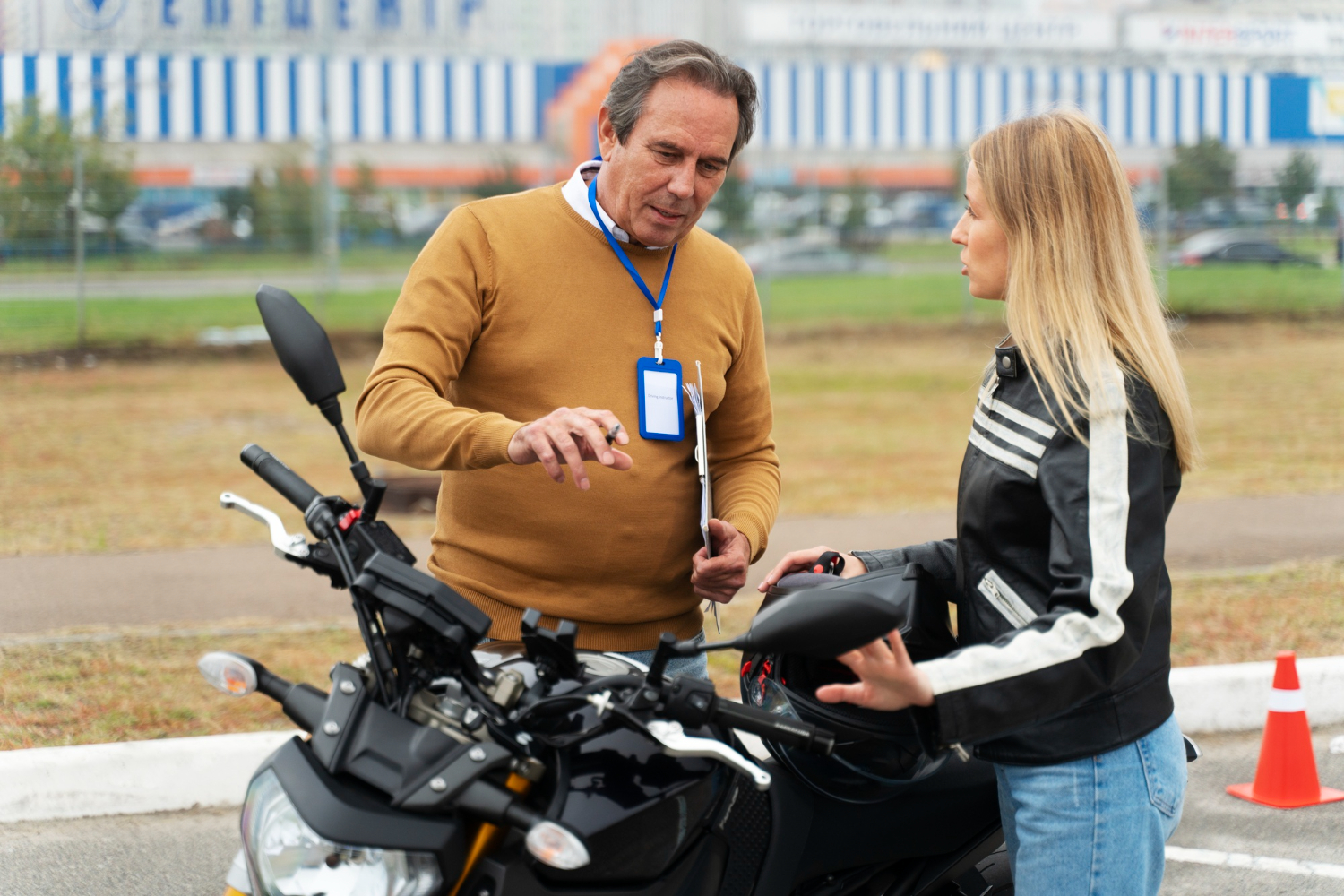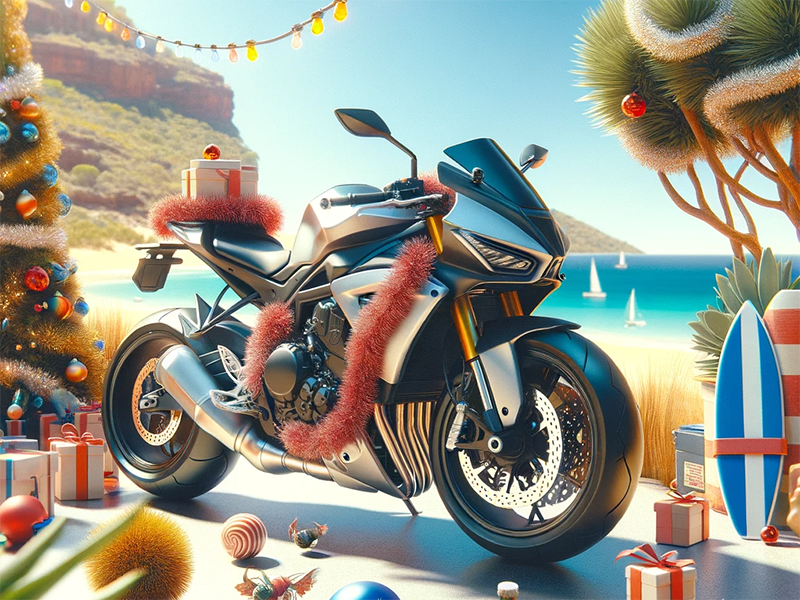Emergency stops are one of those things most riders don’t think about until they desperately need them. But when you’re preparing for your motorbike licence in TAS, it’s something you’ll need to know how to do smoothly, quickly and without second-guessing yourself. During your riding assessment, being able to stop the bike fast and under control isn’t just part of the checklist. It shows that you’ve built the kind of awareness and judgement that makes you safe to share the road with others.
Getting the emergency stop right during the test means more than just grabbing the brakes. It’s about recognising when to stop, reacting without locking up the wheels and staying steady even if you’re surprised. Practising the right movement and learning how to anticipate the situation makes all the difference. With spring rolling into summer in TAS, brighter days and clearer roads are great for getting into a proper practice routine and building these habits well before test day.
Understanding Emergency Stops
An emergency stop is exactly what it sounds like – reacting fast to stop your bike in a controlled way to avoid a hazard. The challenge is doing it quickly without skidding, losing balance or panicking. You don’t always get a warning before someone cuts in front of you or a car door opens unexpectedly. That’s why this skill matters during your test and throughout daily riding.
In the TAS motorcycle test, the emergency stop is one of the core riding exercises. You’ll be asked to ride at a set speed and then stop on cue. The examiner will be looking to see how you control the brake pressure, how balanced you are, and how confidently you bring the bike to a halt. All of this has to happen while keeping your eyes up and managing your surroundings the way you would in real traffic.
What makes emergency braking tricky is that your front brake does most of the work, but if you slam on too hard without thinking, you risk front-wheel lock-up. If you forget the rear brake, your stopping distance can go way up and your posture might break down. The key is combining both brakes smoothly while staying loose in your arms and using your body weight to keep the front end stable. It takes practice, but once you’ve got the feel for it, it becomes second nature.
Step-By-Step: How To Do An Emergency Stop Safely
To give yourself a better shot at doing this right, treat the emergency stop like a sequence. Keep it simple and repeatable. With the right rhythm, this will help you react faster and keep your body and the bike in sync.
Here’s a basic breakdown:
1. Watch for the signal to stop. As soon as you see or hear the cue, ease off the throttle all the way without delay.
2. Squeeze the front brake gently at the start, then build pressure as the weight shifts forward. Keep your fingers firm but not stiff.
3. Press the rear brake at the same time, maintaining that blend of both brakes working together.
4. Stay centred and don’t lean too far back. Use your legs to grip the tank and help stay balanced.
5. Keep your head up and looking forward, not at the ground or the front wheel.
6. Once you’re fully stopped, don’t release the brake too fast. Hold your ground confidently until told to move on.
It’s easy to practise this sequence in quiet areas, especially large empty car parks. Use cones or markers if needed, and vary your stopping speeds to adjust to different conditions.
Building your skills on this can also help you feel safer when riding in peak-hour traffic or areas with heavy pedestrian zones. For example, imagine you’re heading through a narrow city street when someone rushes across without checking. If you’ve got the emergency stop down pat, you’ll catch it with enough time to stop and avoid a mess. That sort of reaction is exactly what your instructor wants to see and what keeps you upright once you’re riding solo every day.
Common Mistakes During Emergency Stops
Even riders with decent control can slip up during an emergency stop, especially under test pressure. Understanding where most people go wrong helps you avoid making the same mistakes. It also gives you a plan to adjust when things don’t feel quite right in your practice.
Here are some of the most common issues learners face:
– Slamming the front brake: This can cause the front wheel to lock and result in a fall. Brake pressure should build up smoothly, not all at once.
– Forgetting the rear brake: Ignoring the rear means you’re relying too much on one part of your braking system. This often leads to poor stopping power and reduced stability.
– Looking down: During a stop, it’s natural to check where your front tyre lands. But looking down shifts your balance and slows your response time.
– Stiff arms and locked elbows: Riders who panic often grip too tightly, making the bike harder to control or steer during the stop.
– Leaning back or sitting too upright: Either extreme throws off your balance and makes the braking uneven, especially if the front starts to dip under pressure.
What helps is breaking down each stop during practice and taking a moment to reflect on how it felt. Were your arms loose? Did your feet stay firm without dragging? Did you look ahead like you were scanning traffic? These small checks build self-awareness, which goes a long way on test day and afterwards too.
Take a planned approach to identifying and correcting your habits. Often, slowing your practice down to half-speed gives you a clearer feel for what’s off. Then you can speed up again while keeping the good habits locked in. Don’t rush the process. You’re riding to improve, not just pass a tick box on a test card.
Practising Emergency Stops Safely
One of the best things you can do leading up to your test is get into a routine with your emergency stop training. The goal isn’t perfection every time, but consistency with how you react and how your body works with the bike.
Safe practice should start with:
– A wide and quiet open space, such as empty car parks or private riding areas
– Good shoes and riding gear to keep you protected
– Someone you trust to signal or monitor, if available
– Discipline in your routine using similar noise, speed and distance to what you’d face during the actual test
Use cones or markers to simulate where you’ll get the stop cue. Then gradually increase your approach speed, paying attention to how your bike behaves. The more you stay in control under different conditions, the readier you’ll be when test time rolls around.
Mock tests are a good way to build confidence too. Have someone watch or record you and give you feedback based on your body position, stopping distance and how fluid you look. Your body should stay relaxed even when your reaction is sharp. Avoid simply running through the motions. Stay alert and treat each round of practice like a real-world situation.
The warmer months in TAS are especially good for getting this work done. Roads are usually dry and visibility is better, which lowers the risk while you’re still fine-tuning your reaction times. Don’t leave your practice until the week before your test. Spread it out and you’ll build stronger habits over time without the stress.
Ready to Stop Like a Pro on Test Day
You don’t need to be perfect every time, but you should feel steady and sharp when faced with an unexpected stop. If you’ve gotten comfortable using both brakes, instinctively look ahead, and can balance through the stop without wobbling or hesitating, you’re on the right track. Emergency stops are all about instinct. The more you’ve trained your body to react fast yet smooth, the better you’ll do when it matters.
Riders who go through plenty of meaningful practice often walk into test day already confident. They ride like stopping quickly is just another part of the ride, not a big disruption. That’s where you want to be. The tester isn’t expecting magic, just a calm, clean response under pressure.
Building these habits can take time, effort and feedback. But the work is worth it. Getting your motorbike licence in TAS means proving you’re safe to share the road with everyone else, and being able to emergency stop on cue is a big part of that. Keep practising and don’t rush the process. With the right training under your belt, that emergency stop can feel like just another easy moment in your ride.
Build your stopping skills and feel more in control when it’s test time. At Stay Upright, we help riders prep for the real world by refining techniques that matter. If you’re working towards your motorbike licence in TAS, our hands-on training can guide you through every stop, turn and challenge with confidence.



